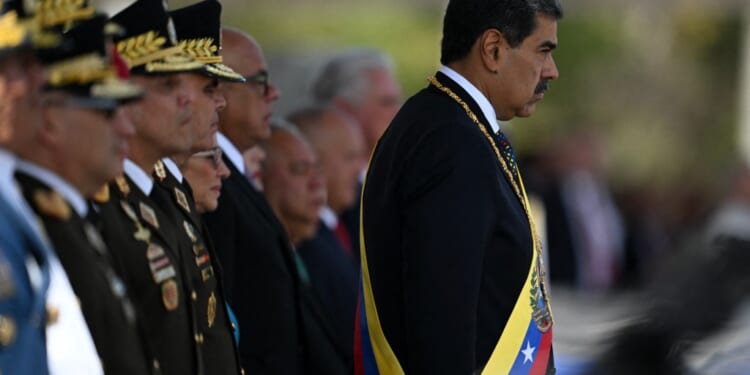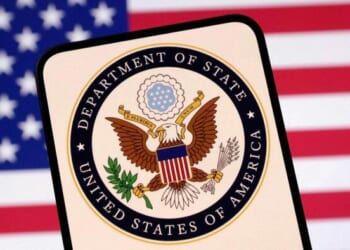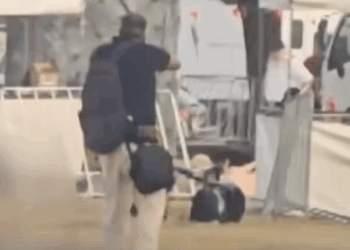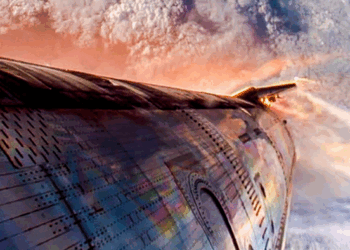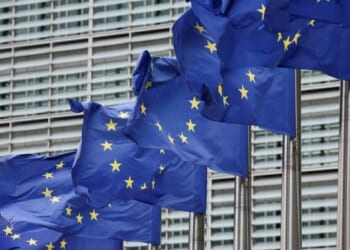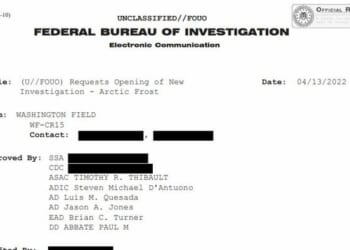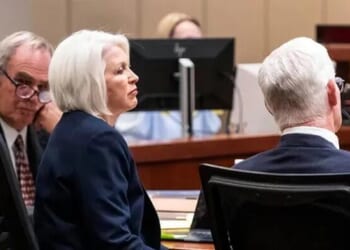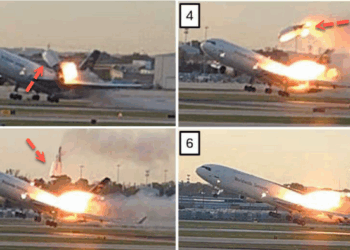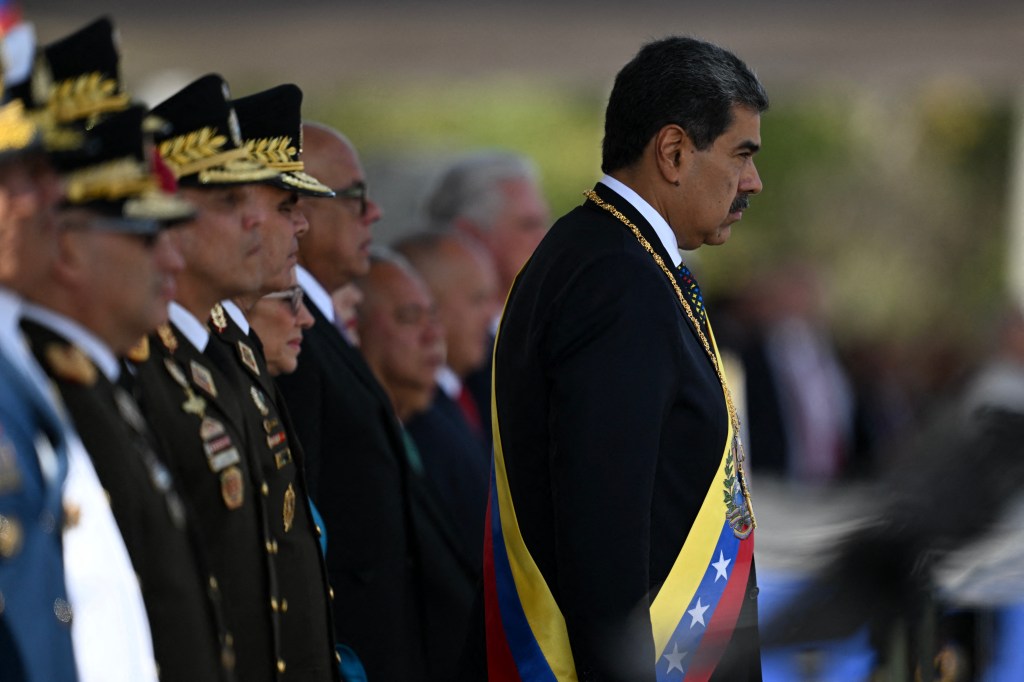
The United States appears on the brink of launching a military strike on Venezuela. Fourteen percent of the global U.S. fleet is now deployed to the Caribbean Sea, and U.S. forces have destroyed at least five suspected “drug boats” operated by Venezuelan nationals in international waters. Despite official messaging that frames pressure on Venezuela as being primarily about narcotrafficking, it is clear that the administration’s ultimate priority is removing the country’s dictator, Nicolás Maduro from power.
Deposing Maduro is an honorable goal. He has stolen elections to stay in power, most blatantly in July 2024 when he claimed victory despite losing by 37 points. He has caused 8 million Venezuelans—28 percent of the country’s population—to flee their homes and created the Western Hemisphere’s largest refugee crisis. He has overseen a staggering economic contraction that has plunged 82 percent of the population into poverty while his generals profit from $8 billion in annual drug trafficking, illegal mining, and oil smuggling through the so-called “Cartel of the Suns.” He has imprisoned more than 1,800 political dissidents, killed at least 24 protesters in postelection repression, and deployed systematic torture and forced disappearances documented by U.N. investigators. The case for his removal rests not on ideological preference but on the infectious misery spread by his regime that has become a plague in the region and in the world.
The Trump administration thus has a strong moral and strategic basis for seeking Maduro’s ouster. However, even the best-case scenarios for regime change in Venezuela are fraught with risk. With so many unknown variables and intangible factors in play, what might the day after regime change look like in Venezuela? Any likely scenario, however incomplete and simplistic, would focus on two pivotal figures: Maria Corina Machado, the opposition’s de facto moral leader who was recently awarded the Nobel Peace Prize, and Maduro, the regime boss. The fate of these individuals—whether they survive or perish—would carry different implications for American interests and the future of the Venezuelan people.
Scenario 1: Maduro forced into exile.
In this scenario, Maduro would depart Venezuela alive but defeated. Maduro would most likely find refuge in Moscow, though Havana, Cuba, and Managua, Nicaragua, are also possible. For this to occur, Maduro would need to be forced out by internal actors—military commanders or regime insiders calculating that his continued presence threatens their own survival more than his departure. These actors would need guarantees against future civil and military prosecution in exchange for facilitating Maduro’s exit.
This path would likely involve negotiations allowing Edmundo González, the winner of the 2024 Venezuelan presidential election who is currently in exile in Spain, to ascend to the presidency or enabling new elections, with international observers ensuring legitimacy this time. Machado, having survived the regime’s attempts to silence her after having to live in hiding for over a year, would play a crucial role in managing the opposition’s transition from resistance movement to governing coalition. Given that she was barred from running in the 2024 election and González won on the strength of being her proxy candidate, Machado would almost certainly formally assume leadership after new, competitive elections are held.
Maduro might continue agitating from abroad—issuing statements, calling supporters to resistance, perhaps even plotting a return—but his influence would atrophy without access to the coercive mechanisms that currently prop up his rule.
There is historical precedent for this outcome. In 1954, Guatemala’s Jacobo Árbenz resigned in the face of imminent U.S.-backed intervention and spent decades in exile. This type of outcome for Venezuela was the goal of both the Biden administration and the first Trump administration, which sought to trigger a democratic transition of power and an internal coup, respectively. Regardless of the method, a bloodless transition maintains bipartisan allure because it insulates the U.S. from having to take primary responsibility for guaranteeing the country’s stability afterwards.
However, it is extraordinarily unlikely to occur by nature of the factors that have kept Maduro’s regime in power for this long, namely support from foreign powers with a vested interest in keeping Maduro in power. The most significant of these backers is Cuba, which has surrounded Maduro with intelligence agents to insulate him from potential coups. Cuba’s regime views Maduro’s survival as existential; losing Venezuela would eliminate billions in oil subsidies and its primary regional ally, potentially triggering the Castro system’s collapse.
Russia and China would strongly oppose this scenario as well, preferring to keep the United States distracted in the Western Hemisphere instead of concentrating military assets in Eastern Europe or the South Pacific. Both would also prefer to force the U.S. to take overt military action to topple Maduro in order to try to paint the U.S. as an imperialist bully and a hypocrite on international sovereignty as it relates to Ukraine and Taiwan. For Maduro to leave willingly would require these external sponsors to withdraw support, which is unforeseeable unless they feel they have a better figurehead to serve their interests and preserve Venezuela’s status quo.
Scenario 2: A decapitation strike.
In a more likely scenario, the United States could conduct a targeted decapitation strike eliminating Maduro, likely along with interior minister Diosdado Cabello and other senior regime figures. This would represent maximum escalation short of a ground invasion, deploying special operations forces or precision strikes against regime leadership. The pretext for this could come about in any number of ways, ranging from a Venezuelan military retaliation to a U.S. land strike to a popular uprising against the regime inside Venezuela.
In the most optimistic permutation, the U.S. would successfully ensure the physical safety of Machado via the insertion of special operations teams; many of the American assets that have moved into the region seem equipped to handle this mission. Without Maduro’s unifying presence, the regime would face enough pressure to fracture. Some supporters might attempt to install a successor, perhaps Defense Minister Padrino López or Cabello if he survived a strike. Others might calculate that negotiating with the opposition offers better prospects than facing potential capture and prosecution.
The opposition would need to move quickly, establishing provisional authority and securing international recognition before competing Chavista factions—regime loyalists devoted to the authoritarian project in Venezuela started under Hugo Chávez—consolidate and act to perpetuate their movement’s chokehold on the Venezuelan state. This scenario would require a significant U.S. diplomatic and security presence, as well as coordination with regional and global partners to legitimize a transition government.
More realistically, there would be a significant risk that removing Maduro and his leadership structure would not lead to broader capitulation by his regime and instead create a power vacuum where various armed factions—regime remnants, criminal networks, potentially even external actors through proxies—compete for control while the opposition leadership remains vulnerable and reliant on the U.S. for military support and security. Turmoil within Venezuela would last months, and quite possibly years, before stability is restored.
Scenario 3: Machado is killed, and Maduro flees.
A darker scenario sees Machado captured and killed, which could be possible if regime forces gamble that U.S. retaliation will fall short of ending their rule. This calculation would be an extremely foolhardy one to make, as her death would galvanize international condemnation and likely trigger significant U.S. strikes. Realizing his misstep and with the prospect of American attacks eliminating his inner circle and dismantling his security apparatus, Maduro would flee to Moscow as in the first scenario.
Venezuela would be plunged into profound chaos with the opposition’s de facto leader martyred, the regime’s leader in exile, no clear succession mechanism, and competing groups vying for control. Chavista factions would attempt to maintain power, backed by Cuba, Russia, Iran, and to a lesser extent China. Cuban intelligence networks embedded throughout Venezuela’s security forces would work to install a loyal successor, perhaps a military figure like Padrino López who could credibly claim continuity while privately negotiating with external powers. The question of Maduro’s potential return would loom over any transition, and adversarial propaganda networks would use his exile as a legitimizing narrative, arguing that he remains the “constitutional president” forced out by imperial intervention, waiting to restore the nation’s sovereignty.
This scenario would present the United States with several difficult options. Putting boots on the ground to rout the remaining Chavista influence would likely be unpopular at home and explicitly go against the administration’s stated foreign policy doctrine. On the other hand, failing to secure Venezuela would possibly lead to complete state collapse, creating a failed state in the Caribbean that becomes a haven for transnational criminal organizations, terrorism, and refugee flows far exceeding the 8 million who have already departed. The balance between punishing the regime and preserving enough institutional structure for eventual transition would prove exceptionally difficult to calibrate.
Scenario 4: Both leaders are eliminated.
The most destabilizing outcome would see both Machado and Maduro killed in relatively short succession, likely through some combination of regime assassinations and U.S. military strikes. This could unfold in various sequences: Maduro orders Machado’s execution, prompting massive U.S. retaliation that results in his death; or American special operations eliminate Maduro first, and regime remnants kill Machado in desperate retaliation. Either way, each side has treated eliminating the other’s leader as its ultimate trump card, making this among the likelier scenarios despite its catastrophic implications.
Venezuela would face unprecedented chaos. As outlined in the other scenarios, the power vacuum would be filled by opposition figures, military commanders, Cuban intelligence operatives, criminal networks, paramilitary groups, and potentially external actors pursuing narrow interests through proxies.
The United States would need to insert a more significant ground presence to prevent a complete state collapse. This could involve securing critical infrastructure such as oil facilities, ports, and the capital while working with regional partners to establish some form of provisional authority. González, who is comparatively more insulated from assassination in Spain, would face the herculean task of establishing authority and rebuilding a ravaged country from the ground up, and would become vulnerable to assassination once he returns to Venezuela.
Without a significant U.S. presence, Venezuela could resemble Libya after Muammar Gaddafi’s 2011 overthrow—state collapse, competing armed groups, external power proxy conflicts, and prolonged instability despite the dictator’s removal.
Are the risks worth the rewards?
As these four scenarios demonstrate, Nicolás Maduro remains in power because foreign governments have made his survival a priority. Because foreign intervention sustains the Maduro regime, foreign intervention will be necessary to end it. It is unrealistic to expect that at an indeterminate point in the future, Venezuelan citizens alone will be able to overthrow a dictatorship propped up by Cuba, Russia, China, and their combined intelligence services, military hardware, and financial backing.
American wariness toward intervention is understandable and justified. The failures of Iraq and Afghanistan have created deep skepticism about regime-change operations. These concerns reflect real costs in American lives, treasure, and credibility. Nevertheless, the United States has already exhausted its alternative options in Venezuela. Sanctions have been imposed, tightened, relaxed, and reimposed over multiple administrations without dislodging the regime. Humanitarian aid has been offered and rejected. The futility of holding elections was demonstrated in July 2024 when Maduro stole an election he lost by a wide margin. Each incremental measure has been tried, found wanting, and proven incapable of overcoming the structural advantages that external authoritarian sponsors provide to their Venezuelan client.
The risks of regime change are substantial and must be acknowledged honestly. Military operations could trigger humanitarian catastrophes, refugee surges, or protracted insurgencies. Stabilization might require commitments of personnel, resources, and attention that Americans are reluctant to provide. Reconstruction could cost tens of billions of dollars with uncertain timelines for success. These possibilities are real, and leaders who minimize them betray either bluster or deceit.
The only path that serves American interests requires confronting the reality that meaningful action carries costs, but meaningful inaction carries greater ones. Venezuela’s crisis will not resolve through patience or hope. Maduro stays because others keep him there. The question is whether the United States possesses sufficient resolve to remove him and sufficient commitment to secure what follows—or whether we have grown so habituated to failure that we mistake it for inevitability.

